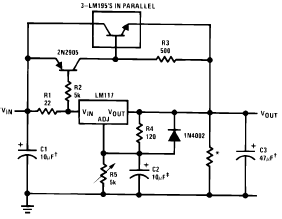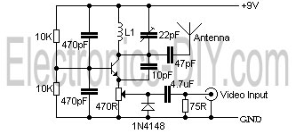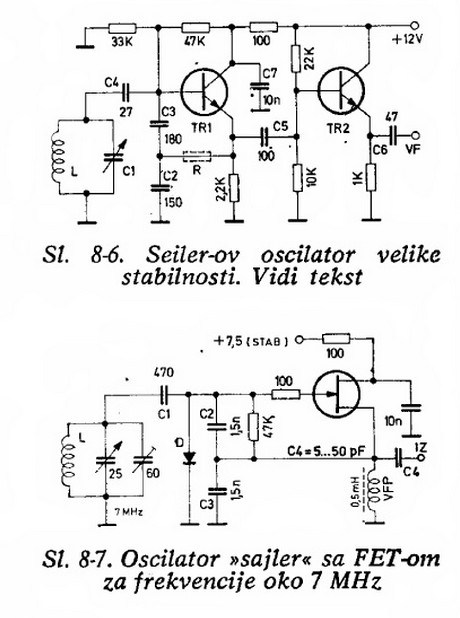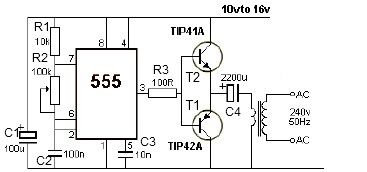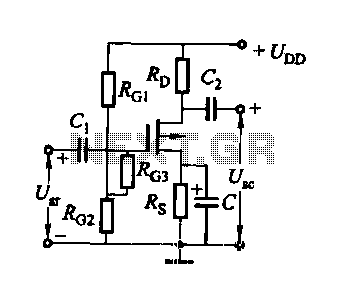
ac What is the output voltage of this 555 timer high voltage circuit

The output of the transformer has been calculated to be 125 times higher than the input, based on the ratio of 1000 to 8. Given an input of 12V, the expected output should be 1500V, although there is some uncertainty regarding this value.
The transformer in question operates on the principle of electromagnetic induction, where an alternating current (AC) in the primary coil generates a magnetic field that induces a voltage in the secondary coil. The transformation ratio, defined as the ratio of the number of turns in the primary coil to the number of turns in the secondary coil, plays a crucial role in determining the output voltage.
In this scenario, the transformer has a turns ratio of 125:1, which implies that for every 1 turn in the primary winding, there are 125 turns in the secondary winding. This results in an output voltage that is significantly higher than the input voltage. The calculation of the output voltage can be expressed using the formula:
\[ V_{out} = V_{in} \times \left( \frac{N_{secondary}}{N_{primary}} \right) \]
Where:
- \( V_{out} \) is the output voltage,
- \( V_{in} \) is the input voltage (12V in this case),
- \( N_{secondary} \) is the number of turns in the secondary coil,
- \( N_{primary} \) is the number of turns in the primary coil.
Substituting the known values into the formula yields:
\[ V_{out} = 12V \times 125 = 1500V \]
This output voltage is theoretically correct under ideal conditions, assuming there are no losses due to resistance in the windings or core losses. However, practical transformers may exhibit losses that could affect the actual output voltage. Factors such as the efficiency of the transformer, load conditions, and frequency of operation can also influence the final output voltage. Therefore, while the calculated output is 1500V, it is advisable to verify this with measurements under actual operating conditions to ensure accuracy.Calculated the output of the transformer to be 125 times (1000 / 8) higher than input. Since 12v is given as input, output should be 1500v (not sure about this) 🔗 External reference
The transformer in question operates on the principle of electromagnetic induction, where an alternating current (AC) in the primary coil generates a magnetic field that induces a voltage in the secondary coil. The transformation ratio, defined as the ratio of the number of turns in the primary coil to the number of turns in the secondary coil, plays a crucial role in determining the output voltage.
In this scenario, the transformer has a turns ratio of 125:1, which implies that for every 1 turn in the primary winding, there are 125 turns in the secondary winding. This results in an output voltage that is significantly higher than the input voltage. The calculation of the output voltage can be expressed using the formula:
\[ V_{out} = V_{in} \times \left( \frac{N_{secondary}}{N_{primary}} \right) \]
Where:
- \( V_{out} \) is the output voltage,
- \( V_{in} \) is the input voltage (12V in this case),
- \( N_{secondary} \) is the number of turns in the secondary coil,
- \( N_{primary} \) is the number of turns in the primary coil.
Substituting the known values into the formula yields:
\[ V_{out} = 12V \times 125 = 1500V \]
This output voltage is theoretically correct under ideal conditions, assuming there are no losses due to resistance in the windings or core losses. However, practical transformers may exhibit losses that could affect the actual output voltage. Factors such as the efficiency of the transformer, load conditions, and frequency of operation can also influence the final output voltage. Therefore, while the calculated output is 1500V, it is advisable to verify this with measurements under actual operating conditions to ensure accuracy.Calculated the output of the transformer to be 125 times (1000 / 8) higher than input. Since 12v is given as input, output should be 1500v (not sure about this) 🔗 External reference
